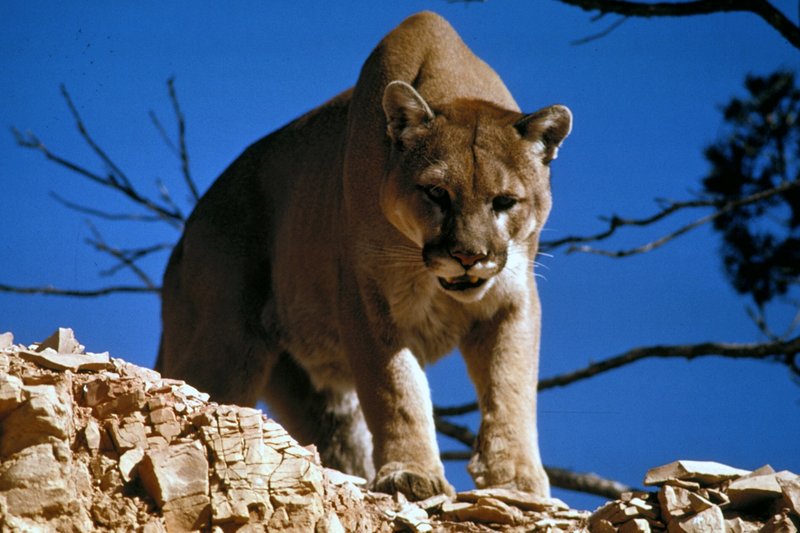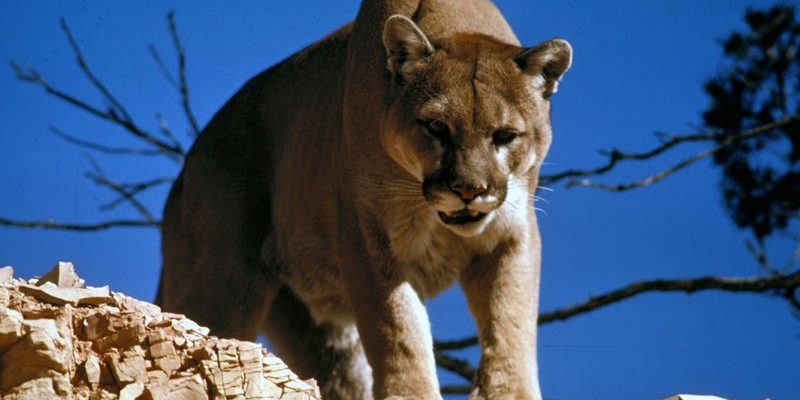
When you think of big cats, names like tiger and lion might spring to mind. But there’s another remarkable feline roaming the mountains and forests of North America: the Mountain Lion. Also known as the cougar or puma, this sleek creature is more than just a pretty face; it plays a crucial role in its ecosystem and captivates the imagination with its stealthy hunting skills and striking appearance.
Imagine a perfectly camouflaged cat, moving gracefully through rocky terrains and dense forests. With a body built for speed and agility, the Mountain Lion is a master of its domain, often lurking just out of sight. As we explore the world of this fascinating feline, you’ll discover not only its habits and habitats but also the challenges it faces in our ever-changing world.
What is a Mountain Lion?
The Mountain Lion is a large, solitary cat that can be found in a variety of habitats, from forests to mountains and even suburban areas. Unlike some wild cats, Mountain Lions can adapt to different environments, making them widespread across the Americas. They typically weigh between 64 to 220 pounds and measure between 3 to 5.5 feet in length, with an additional tail that can be just as long. Their coat is usually a beautiful tawny color, providing excellent camouflage in their natural surroundings.
With their keen senses and extraordinary hunting skills, Mountain Lions are primarily solitary hunters. They rely on their stealth and ability to stalk prey rather than chasing it down over long distances. This makes them highly efficient predators, capable of taking down animals much larger than themselves, such as deer and elk. But they’re not just fierce hunters; they also play an important role in controlling the population of these species, thus maintaining a balanced ecosystem.
Mountain Lions are known for their adaptability. They can live in almost any habitat, as long as there is ample food and space to roam. This ability to thrive in various environments has allowed them to expand their range over the years, leading to their presence in regions where they were once absent.
Interesting Mountain Lion Facts
| Scientific Name: | Puma concolor |
| Average Size: | 3-5.5 feet long (excluding tail) |
| Weight: | 64-220 pounds |
| Habitat: | Forests, mountains, deserts, and even urban areas |
| Diet: | Deer, elk, small mammals, and birds |
| Top Speed: | Up to 50 mph |
| Lifespan: | 8-13 years in the wild; up to 20 years in captivity |
Habitat of the Mountain Lion
Mountain Lions can be found across a diverse range of habitats throughout the Americas, from the rocky cliffs of the Rocky Mountains to the lush forests of the Pacific Northwest. This adaptability is one of their most impressive traits. They thrive in regions that provide adequate cover and access to prey, meaning you’ll find them in areas like dense forests, grasslands, and even desert environments.
Interestingly, Mountain Lions have been known to venture into suburban areas where their natural habitats have been encroached upon by human development. They are drawn to these areas by the presence of deer and other prey animals. However, this can lead to conflicts with humans, as encounters may happen more frequently as their territories overlap with ours.
A vital aspect of the Mountain Lion’s habitat is the availability of shelters, such as caves, dense brush, or rocky outcrops. These locations provide safety from both prey and predators, as well as a place for females to raise their young. Mountain Lions are territorial and require large ranges—sometimes upwards of 100 square miles—to thrive, depending on the availability of food.
Diet and Hunting Strategies
As apex predators, Mountain Lions are incredibly skilled hunters. Their diet primarily consists of large mammals such as deer, elk, and moose, but they will also take smaller prey like rabbits, birds, and rodents when the opportunity arises. This diverse diet helps them adapt to changing conditions when certain prey is less available.
Their hunting strategy is remarkably effective. Mountain Lions rely on their stealth and patience, often stalking their prey through dense vegetation before launching a quick, powerful attack. They can leap up to 40 feet in a single bound, which gives them a significant advantage when closing the distance on an unsuspecting animal. Once they make the kill, they use their powerful jaws and sharp claws to subdue their prey quickly.
Once they’ve secured a meal, Mountain Lions often drag their prey to a hidden location to eat. This behavior not only reduces the risk of losing their meal to scavengers but also allows them to feast at their leisure. They won’t hesitate to cover the remains with leaves or dirt for later, showcasing their intelligence and stealth as they navigate the food chain.
Reproduction and Life Cycle
Mountain Lions reach sexual maturity between 1.5 to 3 years of age. Mating occurs throughout the year, though a peak in activity is observed from December to March. After a gestation period of about 90 to 95 days, female Mountain Lions give birth to a litter of one to six cubs. These cubs are born blind and rely entirely on their mother for food and protection during their early months.
During the first few weeks, the mother keeps her cubs hidden in a secluded area to protect them from potential threats. As they grow, she begins to take them on hunting trips, teaching them essential skills for survival. The cubs stay with their mother for about 1.5 to 2 years before dispersing to establish their territories. This extended period of parental care helps ensure that they grow strong and competent.
Mountain Lion cubs are playful and engage in various activities to develop their physical and social skills. They practice hunting by pouncing on each other and exploring their surroundings—all vital for their future as solitary hunters. Unfortunately, the survival rate for cubs can be low due to predation and environmental factors. Only about half of the cubs typically survive to adulthood, highlighting the challenges these magnificent creatures face early in life.
Conservation Status
The Mountain Lion is classified as a species of least concern by the IUCN, which means that, overall, they are not currently at risk of extinction. However, their populations fluctuate based on habitat loss, hunting, and human-wildlife conflicts. Urban expansion often leads to habitat fragmentation, making it more difficult for Mountain Lions to find suitable territory and prey.
In many regions, Mountain Lions are protected by laws that limit hunting and encourage coexistence with humans. Strategies like wildlife corridors help ensure that these cats can move safely between habitats, promoting genetic diversity and stability in their populations. Education plays a vital role in conservation efforts, as families living near Mountain Lion habitats can learn to coexist with these majestic creatures.
Efforts to maintain healthy Mountain Lion populations also include monitoring their movements and understanding their behavior. Researchers use GPS collars to track Mountain Lions, providing valuable data that can inform conservation policies and public awareness campaigns. With proper management and respect for their ecological role, we can continue to appreciate and protect the Mountain Lions that roam our wild landscapes.
Human Interaction with Mountain Lions
As human populations expand and encroach on natural habitats, encounters with Mountain Lions become more common. While these encounters can be alarming, it’s essential to remember that these cats are generally shy and avoid people when possible. However, there are some important steps to take if you find yourself in the presence of one.
If you come across a Mountain Lion while hiking or exploring, it’s essential to stay calm. Back away slowly while maintaining eye contact, and avoid turning your back on the animal. Make yourself look larger by raising your arms and speaking firmly—yelling or making loud noises can sometimes scare them off. In rare instances where a Mountain Lion attacks, it’s crucial to fight back vigorously. They are more likely to retreat if they perceive you as a threat.
Education is key to reducing conflicts between humans and Mountain Lions. Communities living near their habitats can benefit from outreach programs that inform residents about Mountain Lion behavior, safety tips, and the importance of coexistence. Simple measures, like securing pets and avoiding leaving food outside, can significantly reduce the risks of attracting these magnificent predators.
FAQ
Are Mountain Lions dangerous to humans?
Mountain Lions are generally not a threat to humans. They tend to avoid people and are more scared of us than we are of them. However, there have been rare cases of attacks, often involving individuals who were running or biking alone in their territory. Knowing how to react if you encounter one can help ensure your safety.
How can I tell if a Mountain Lion is in the area?
Signs of Mountain Lion presence can include tracks, scat, or scratch marks on trees. Their tracks are typically around 3 to 4 inches in diameter, and you may also notice signs of prey being stalked. If you find any of these signs, it’s a good idea to be cautious and aware of your surroundings.
What do Mountain Lions eat?
Mountain Lions primarily feed on large mammals like deer, elk, and moose. However, they also hunt smaller prey such as rabbits, birds, and rodents when necessary. Their flexible diet helps them adapt to different environments and food availability.
How fast can a Mountain Lion run?
Mountain Lions are incredibly agile and can reach speeds of up to 50 mph in short bursts. This speed allows them to chase down prey effectively, particularly in their rocky mountainous habitats where they can use their agility to their advantage.
Where do Mountain Lions live?
Mountain Lions inhabit a wide variety of environments across North and South America, including forests, mountains, deserts, and even suburban areas. They thrive in locations with ample cover and access to prey, making them adaptable and resilient.
How long do Mountain Lions live?
In the wild, Mountain Lions typically live 8 to 13 years, although some can reach up to 20 years in captivity. Their lifespan is influenced by factors such as predation, disease, and availability of food.
Can Mountain Lions climb trees?
Yes, Mountain Lions are excellent climbers! They often use trees to escape from danger or to stalk prey. Their sharp claws and powerful limbs allow them to ascend trees with ease.
Do Mountain Lions have any natural predators?
As apex predators, Mountain Lions have few natural enemies. However, young cubs can fall victim to larger carnivores like bears or adult Mountain Lions if they wander too far from their mothers. Humans pose the most significant threat through hunting and habitat destruction.
What should I do if I see a Mountain Lion?
If you encounter a Mountain Lion, it’s crucial to stay calm. Maintain eye contact, back away slowly, and avoid turning your back on the animal. Make yourself look larger and make noise to try to scare it off. If an attack occurs, fighting back vigorously can improve your chances of surviving.
How do Mountain Lions communicate?
Mountain Lions use various vocalizations, body language, and scent markings to communicate. They may growl, hiss, or make a distinctive scream to establish territory or attract a mate. Scent marking often occurs through urine or scratch marks on trees.
Are Mountain Lions solitary animals?
Yes, Mountain Lions are predominantly solitary creatures. They prefer to live independently, except during mating or when a mother is raising her cubs. This solitary nature contributes to their stealthy hunting style and territorial behavior.

